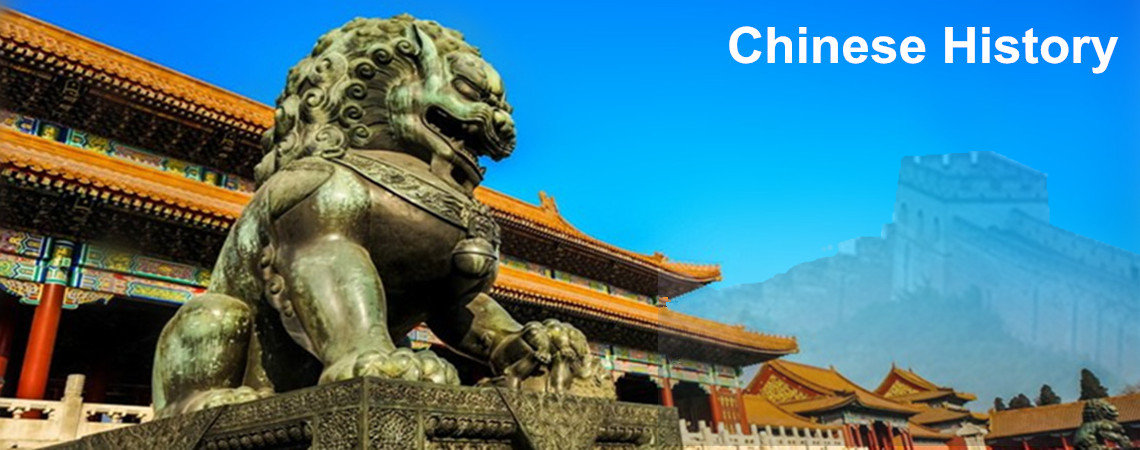
Warring States Period (476 BC-221 BC)
Time: 476 B.C.-221 B.C.
Capital: Disunity of the country
Emperors: Seven Kings in Warring States
Replaced by: Qin Dynasty
During the Warring States Period, nobles stopped supporting the Zhou Dynasty (1046–221 BC), and Zhou's vassal states declared themselves independent from Zhou, becoming kingdoms or warring states.
Chu became the biggest state. It controlled the southern third of the entire region of the Warring States. Qin also controlled about a third of the territory in the west. The rest of the states comprised the northeastern third of the region of the Warring States.
481 BC was the end of the Spring and Autumn Period according to the Spring and Autumn Annals. 475 BC, start of King Yuan of Zhou's rule, is the generally accepted date. 403 BC was when the Jin State officially parted into Zhao, Wei, and Han.
The Partition of Jin (455–403 BC)
The Jin state was a major state during the middle part of the Zhou Dynasty, in central northern China, but the Jin duke lost power to his nobles.
The states of Zhao, Wei, and Han were effectively all that was left of Jin after the battle of Jinyang (455–453 BC). In 403 BC, the Jin state was recognized by the Zhou Dynasty as split into the three successor states.
Qi Became Independent(379–343 BC)
The Qi state had been ruled by the Jiang family since it was founded. In 379 BC, Duke Kang of Qi died with no heir and King Wei from the Tian family took the throne.
The new ruler launched several successful campaigns against other states, extending Qi's territory. By the end of King Wei's reign (379–343 BC), Qi was one of the strongest states, and independent from the Zhou Dynasty.
Shang Yang Reformed Qin (361–338 BC)
In 361 BC, a legalist called Shang Yang, who was born in the Wei state, went to Qin, and his legalist reform proposal was adopted by Duke Xiao of Qin (ruled 362–338 BC).
Shang Yang espoused rule according to a defined set of strict rules and a clear political philosophy. By 338 BC, although Shang Yang was eventually killed, his reform had made Qin the most powerful and ruthless state, both in military and economic terms.
Chu Conquered Yue (334 BC)
In the late 390s BC, King Dao of Chu (ruled 401–381 BC) made Wu Qi his chancellor. Wu's reforms began to transform Chu into an efficient and powerful state.
In 334 BC, Chu's power reached its peak when it conquered Yue.
Qin and Yan Defected (325–323 BC)
With the Zhou government's weakness, more and more states proclaimed themselves to beindependent kingdoms.
In 325 BC, Duke Hui of Qin proclaimed himself "King Hui of Qin".
In 323 BC, the Yan state followed suit..
End of the Warring States Period (246–221 BC)
Seven warring states remained by the third century BC: Qin, Chu, Qi, Yan, Han, Wei, and Zhao.
The Qin Military Buildup (246–230 BC)
Thanks to Shang Yang's reforms, Qin had become the most powerful and ruthless state, and possessed the power to unify the Warring States.
King Zheng, later to become the First Emperor of the Qin Dynasty, started to "rule" the Qin state in 246 BC when he was 13. His ruling court mobilized Qin for conquests, and Zheng was in full control by the time preparations were made in 230 BC.
The Conquests of the Qin State (230–221 BC)
In 230 BC, King Zheng started his conquest of the Warring States. He adopted his chancellor Li Si's idea that the whole conquest should be carried out in order of difficulty.
In 230 BC, Han was conquered first by QinIn 228 BC, Qin occupied the territory of Zhao.
In 226 BC, Qin occupied the Yan capital, Ji (now Beijing), and the King of Yan moved his capital to Liaodong.
In 225 BC, Qin conquered Wei.
In 223 BC, Qin conquered Chu.
In 222 BC, Qin conquered the rest of Yan and Zhao.
In 221 BC, Qin conquered Qi, and the Qin Dynasty ruled over a united China.







 Ask Questions ?
Ask Questions ?